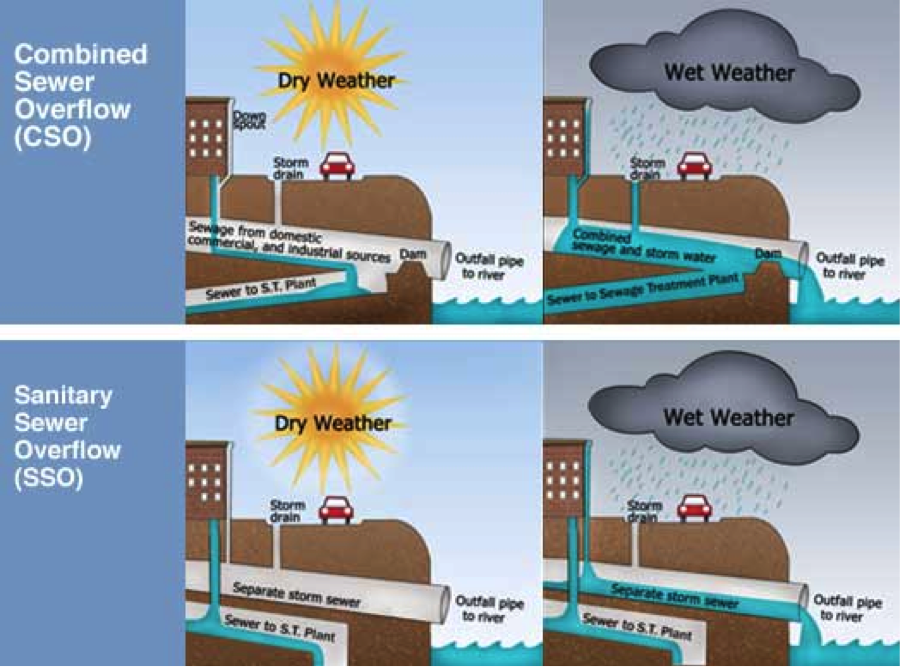
The historic rainfall that hit the east coast this week had some pretty nasty impacts. From flooding in Florida to a stunning street collapse in Baltimore, the images were remarkable. Here in CT we experienced a month’s worth of rain in 24 hours leading to sewage overflows into Connecticut’s rivers and Long Island Sound. In addition to being downright disgusting, such overflows threaten public health, economic activity, and the environment.
As we have pointed out before, these overflows, from either combined sewer overflows (CSOs) and/or Sanitary Sewer Overflows (SSOs), are caused by large rain events in which stormwater overwhelms our sewage treatment infrastructure and carries untreated sewage into our waterways. (See image below) These systems were designed to allow for this kind of occasional overflow, but with increased development and an increased frequency of large rain events they are causing a major water pollution problem. It is estimated that every year 860 billion gallons of untreated sewage enter our waterways, enough to fill 1.3 million Olympic sized swimming pools.

For those grossed out by this week’s events, know that there is hope. Aside from rebuilding these systems at tremendous expense, there are other things we can do – such as investing in green infrastructure. Green infrastructure refers to a number of practices that utilize natural systems to soak up storm water before it gets to our storm drains. These practices include green roofs, rain gardens/bioretention, pervious pavements, and rain barrels/cisterns. By soaking up storm water close to where it falls, the burden on our grey infrastructure and the likelihood of sewage overflows is reduced.
Major cities like Chicago, New York and Philadelphia and investing in green infrastructure in a big way. The use of green infrastructure in CT is growing as well. For example, UConn has made green infrastructure part of their standard building practices. This has helped divert 39 million gallons of stormwater (equal to 56 Olympic-sized swimming pools) from entering the stormwater system. Even Congress is trying to pass a bill that encourages these practices on a national scale (although, truth be told, the bill hasn’t seen much action.)
Homeowners can play a role too by using rain barrels, installing rain gardens, and diverting gutter downspouts to vegetated areas. There is no greater incentive than the impacts of this week’s rainfall and the photo at the top of this post.